Once, when I told my mother that there are plenty of LGBTQIA+ flags, she reacted with surprise. “Do different countries have their own pride flags?,” she asked innocently. I laughed, but then realized that’s a good question. It made me think of all the LGBTQ flags and their meanings. I told her, “No, different countries don’t have their own pride flags, but different identities in the community certainly do.” She thought for a bit and then added, “But it’s one community. Why not just one flag?”
Yes, it is one community. But every gender or sexual identity has its own rebellious and empowering history of inclusion in the community. Each sub-community within the main community has a separate identity and we can’t overlap them in terms of their definition, history, struggle, expression, and joy. Even the rights and laws they continue to fight for, and the discrimination they face vary with their unique identities sometimes.
Cishets, or cisgendered heterosexual people, often confuse the entire community as one gigantic homogenous unit. We often see cishets in power use the stories of a queer* person for their own social or economic benefit. You’ll see them approach ‘any’ member of this community, and ask them questions about another member’s rights or struggles.
They’ll ask a cis bisexual woman, for example, to talk about rights of intersex people. Or a gay man to talk about lesbians. Just because we’ve had to smoosh together in this beautifully endless acronym of LGBTQIA+, it doesn’t mean we have the authority or the experience to speak over another queer person’s story.
This is one of the reasons I want to talk about LGBTQ flags and their meanings. So that cishet people understand how vast the community truly is, why every group needs its own representation and rights, about the violence we go through at the hands of many cishets, and why you need to learn about these identities to make yourselves better allies. This goes for people within the community too, as we all need to be better allies to each other as well.

21 LGBTQ Flags And Their Meanings – Know What They Stand For
Table of Contents
So, how many pride flags ARE there? 21. And there will probably be more LGBTQ flags and their meanings in the future as people keep discovering that gender expression and sexual orientation were never supposed to be boxed up, OR decided by other people from birth. Their meanings have evolved with time, and with growing socio-political awareness around the intersectionalities of queerness, some pride flags have been redesigned or modified to be more inclusive.
What I love about this variety, despite the controversies about their meanings and frictions over which one to be used ‘officially’, is the constant intent of inclusion and the pride we take in learning as we grow queerer every year. Even the rainbow flags that everyone associates with the community at large has variations for the same reasons stated above.
In a world where the legal rights of the LGBTQ community are a distant dream, pride flags are mocked and burnt down, where symbols and safe places of queerness are destroyed, and queer people threatened and killed regularly, it’s becoming more and more important for allies to educate themselves and learn about and from queer people. So, let’s get started, and take a deep dive into the land of colors where everyone can take up space. Here are 21 LGBTQ pride flags and their names and meanings:
Related Reading: 10 Ways The Queerphobia Is Coming From Inside The House
1. Gilbert Baker pride flag
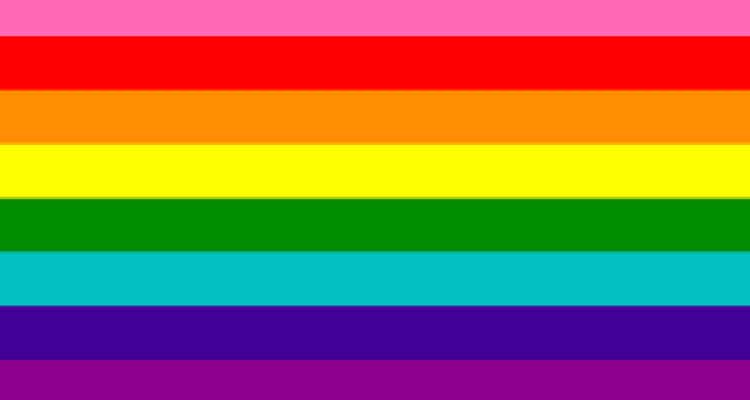
There’s a dispute over who created this 8-color pride flag, but Gilbert Baker is mostly credited for it. Judy Garland’s “Over the Rainbow” inspired this beauty in 1977. Hot pink is for sex, red for life, orange for healing, yellow for sunlight, green for nature, turquoise for art/magic, indigo for serenity, and violet for spirit. Later, the creator had trouble sourcing the pink fabric so the flag was created without it, using the rest of the seven colors instead.
2. Traditional pride flag
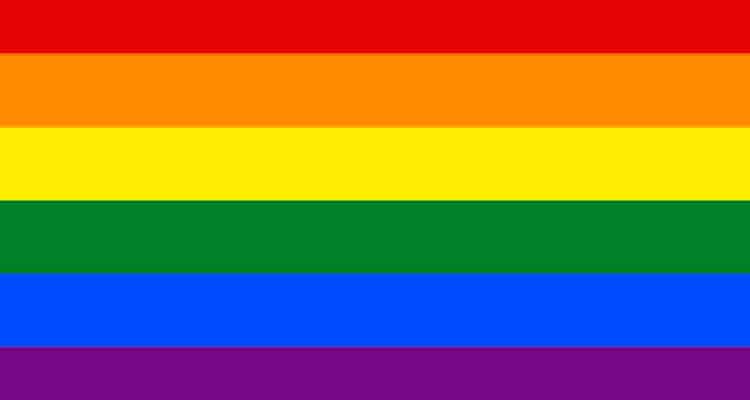
Of all LGBTQ flags, this pride flag with 6 colors is the most visible and popular symbol of the community, and is a rage among people of various gender identities and those in a same-sex relationship. It includes the colors red, orange, yellow, green, indigo, and violet. The pink and turquoise were removed to make it easy to mass-produce. I, and many of my friends, have these colors on badges, flags, fridge magnets, t-shirts, etc.
This flag commonly symbolizes the entire community and is used by many people, organizations, and events to denote they are safe spaces for LGBTQIA+ people. But to add socio-political nuance to this flag, I will present to you all the other flags that followed this one. They are either more inclusive improvements of this traditional flag, or they represent the specific gender identities, attractions, and sexual orientations within the community.
Related Reading: 30 LGBTQ Books You Should Read In 2023
3. Philadelphia people of color-inclusive flag
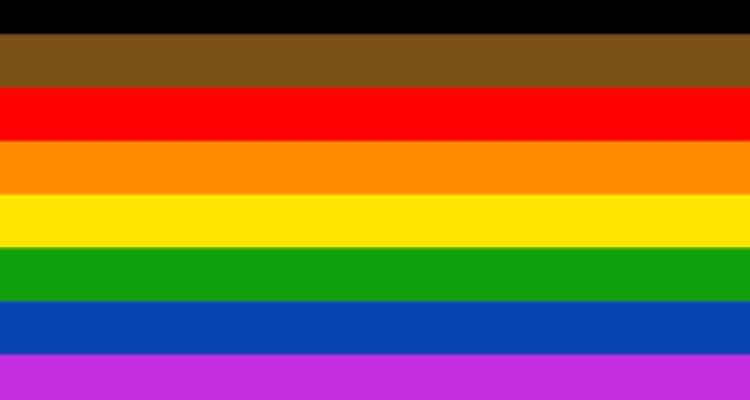
Queer people of color are often discrimated against, not just generally but more painfully, within the LGBTQ+ community as well. So, in 2017, Philadelphia added these two stripes of colors – black and brown – to declare their solidarity with queer people of color, and to sharpen the focus on those who have been marginalized since the beginning of the queer rights movement. The more visibility a color in the flag has, the more visibility it brings to the issues it underlines.
4. Queer people of color flag
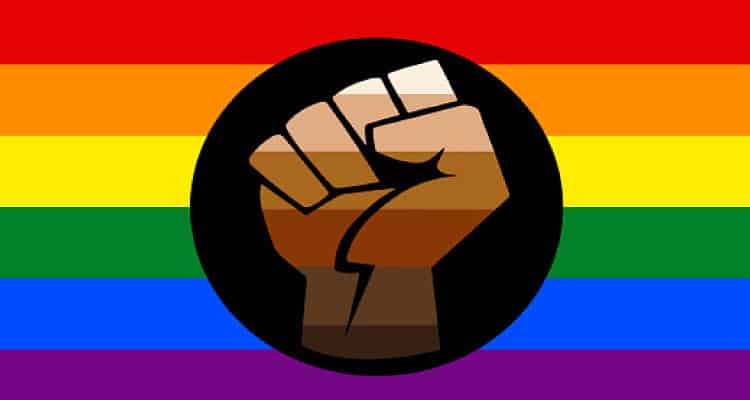
This flag rose to prominence during the Black Lives Matter movement, and beautifully intersects queer, brown and black identities of all different shades and marginalizations. We can never forget that we, as queer people, owe the small freedoms we enjoy and have learned how to attract love in our lives due to our black trans ancestors and queer people of color.
Much like this collective fist in the flag, they rebelled, fought, loved, and went down in history giving us watershed moments of pride and revolutions. It’s a tragedy that they continue to fight for our and their own freedoms and justice, while we conveniently continue to marginalize them in every political, economic, and socio-cultural space.
5. Progress pride flag
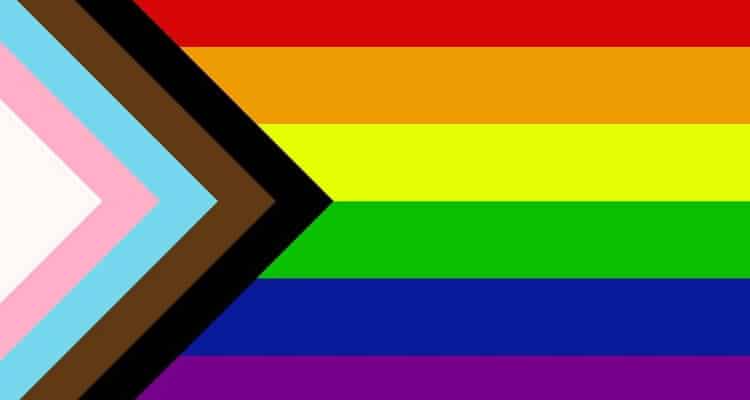
Queer, nonbinary artist Daniel Quasar created this flag as a nod toward inclusion of black, brown, transgender, and nonbinary (enby) identities. Brown and black stripes represent the often invisibilized experiences of people of color. These stripes also represent people living with HIV/AIDS, people who have passed from HIV/AIDS, and the stigma around HIV/AIDS that still prevails and affects queer people disproportionately. White, pink, and blue are colors of the transgender flag, to include more experiences of people who are transgender, gender nonconforming (GNC) and/or undefined.
Related Reading: What You Need To Know About Coming Out Of the Closet
These were some of the broadly representative LGBTQ flags and their meanings. Here are some flags that represent marginalized gender identities.
6. Transgender flag

Monica Helms, a trans woman, designed the transgender flag in 1999. She said, “The light blue is the traditional color for baby boys, pink is for girls, and the white in the middle is for those who are transitioning, those who feel they have a neutral gender or no gender, and those who are intersex.” Helms says that people should use the trans flag when they want to specifically talk about trans people, instead of using the rainbow one. She says, “Use our colors, use our flag, use our symbol.”
Out of all LGBTQ flags, the trans pride flag is one of the most important. This is because of the continued acts of violence and discrimination against trans people all over the world, and the visibility their issues require from each and every one of us.
7. Nonbinary flag
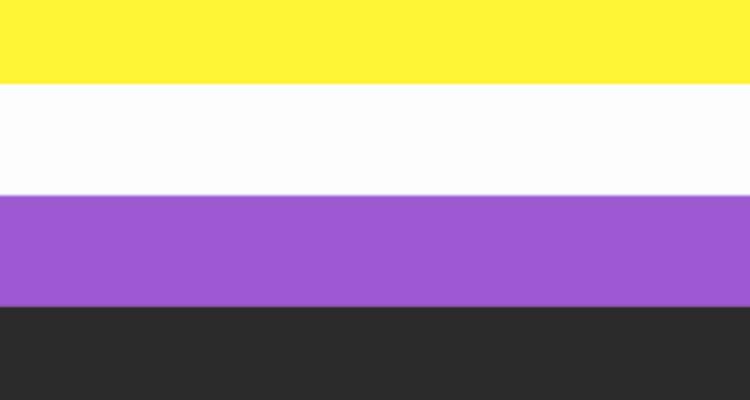
The name ‘nonbinary’ itself rejects the binary idea of gender. In 2014, 17-year-old Kye Rowan created the nonbinary (or enby) flag. The yellow represents people with genders outside the cisgnder binary of male and female, white represents people with multiple gender identities, black represents agender people, and purple is a mix of genders. As you can see, the pride flag colors meaning can be as diverse as the sub-communities under the LGBTQIA+ umbrella.
8. Two-spirit pride flag
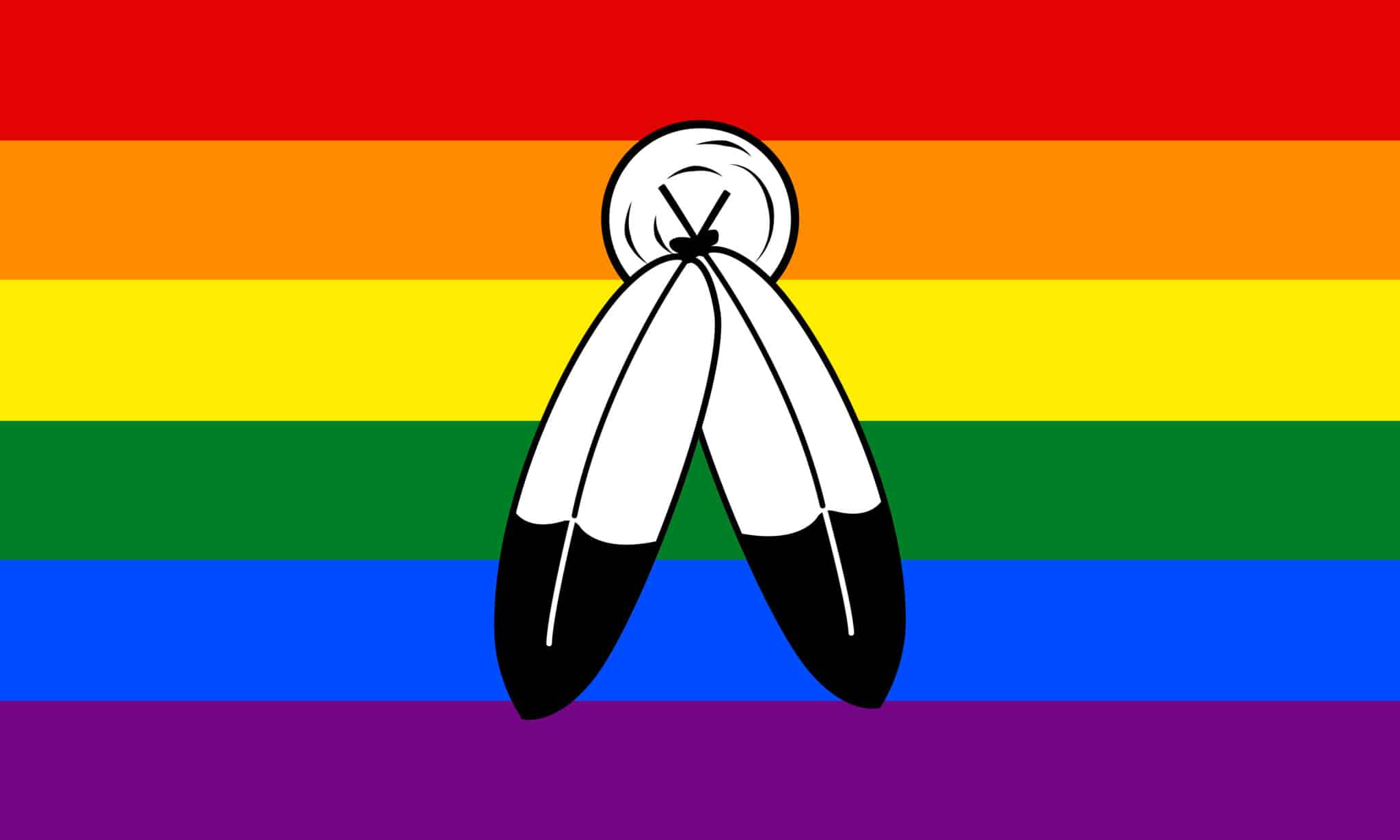
The importance of such LGBTQ flags and their meanings belong in the annals of history, and must be talked about. This flag represents people in indigenous North American communities who fulfill a traditional third-gender (or other gender-variant) role. According to the University of Northern Colorado, “Two-spirit individuals traditionally were viewed as holding a masculine and feminine spirit. They held a gender identity outside of the binary man or woman.” The flag was created by Elder Myra Laramee.
9. Genderfluid flag
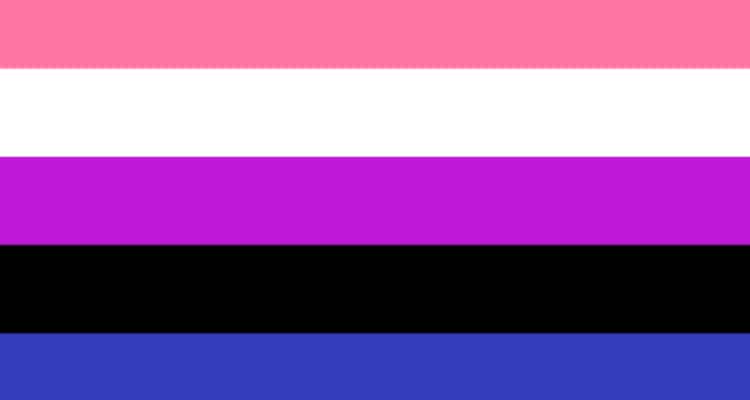
The flag represents genderfluid people who don’t identify with one gender, and their gender identity shifts between male, female, or somewhere else on the spectrum. The flag colors are associated with femininity (pink), masculinity (blue), and everything in between. The white represents the lack of gender, and purple symbolizes a combination of masculinity and femininity. The black symbolizes all genders, including third genders. JJ Poole created this flag in 2012.
Related Reading: Is Your Family Emotionally Blackmailing You To Get Married?
10. Genderqueer flag
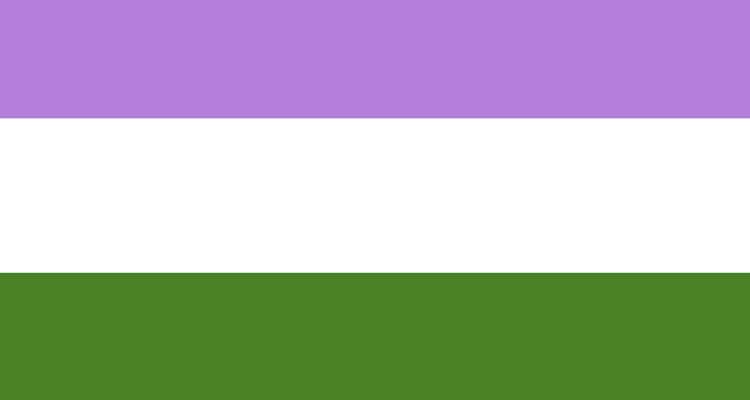
The genderfluid flag was created by Marilyn Roxie in 2011. Lavender denotes androgyny, white denotes agender identities, and green denotes enby people. Genderqueer people do not conform to society’s ideas of how they should act or express themselves based on the gender they were assigned at birth.
11. Agender flag
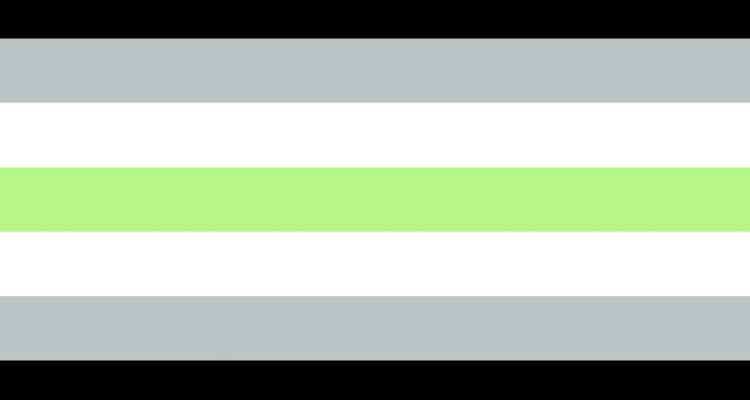
Genderqueer people bend the rules of gender, but agender people reject gender completely. Salem X or “Ska” created this flag to represent agender people, where green represents nonbinary, and the colors black and white denote the absence of gender.
12. Intersex flag
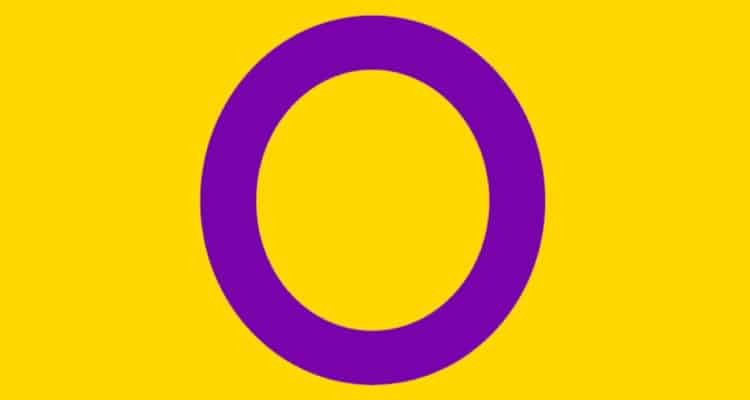
In 2013, Morgan Carpenter created this flag for intersex people. Intersex is an umbrella term for those whose bodies do not align with the gender binary of male or female. Some people can have both sets of genitals, various combinations of chromosomes or more differences. So, Morgan chose yellow and purple, for neither is associated with the social constructs of gender binary. The circle, perfect and unbroken, represents the wholeness of intersex people.
Related Reading: United By Love, Divided By Gender-Roles In Marriage
These were some of the LGBTQ flags and their meanings, specifically related to gender identities. Now, here are some pride flags that represent people with marginalized sexual orientations and romantic attractions:
13. Bisexual flag
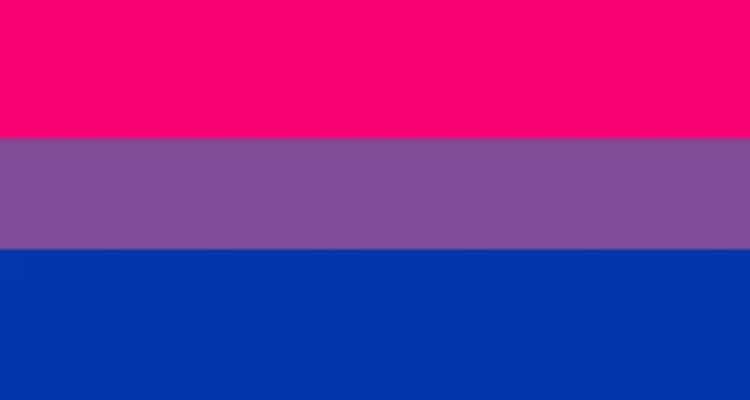
Out of all the different LGBTQ flags and their meanings, this one resonates with me the most because I’m bisexual. In 1998, Michael Page created this flag using pink to symbolize attraction to the same gender, blue to represent attraction to a different gender, and purple to represent attraction to two or more genders. Bisexuality isn’t necessarily an attraction to just men and women, it can be defined as attraction to any two or more than two gender identities.
14. Pansexual flag
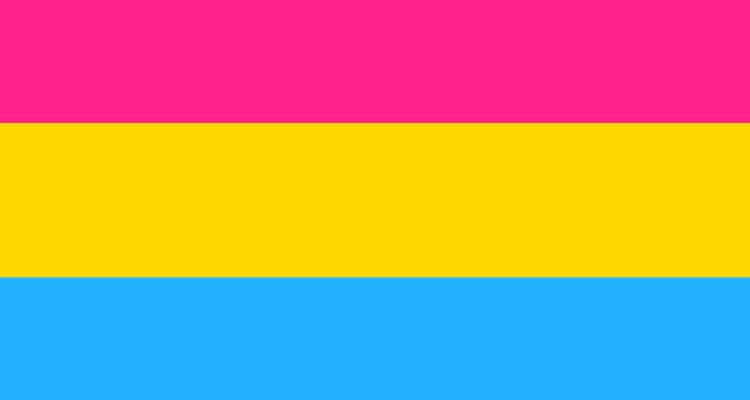
The flag was created by an online pansexual community in 2010 to represent pansexuals – people who are attracted to all gender identities. Pink is for women, blue represents men, and yellow is for enby and gender nonconforming (GNC) people. Gender and sex are not determining factors in the romantic or sexual attraction that pansexuals feel for others.
Related Reading: 19 Examples Of Healthy Boundaries In Relationships
15. Lesbian flag
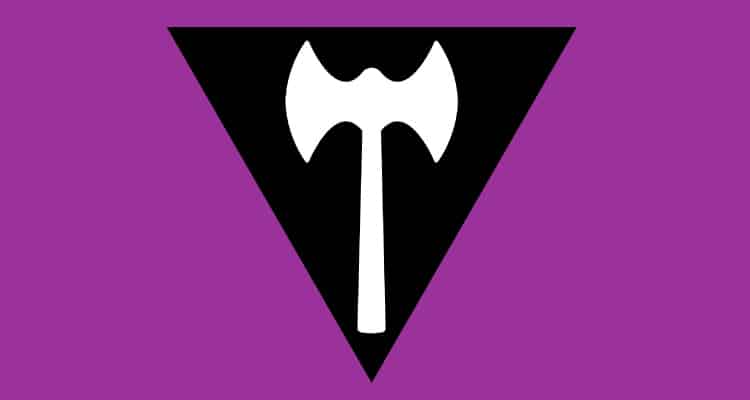
There are different LGBTQ flags and their meanings, but this one seems to be the most controversial one by far. There are plenty of variations of a lesbian flag and here, we’ll discuss two of them. This early lesbian flag was created in 1999 by a gay graphic designer, Sean Campbell.
Under the Nazi regime, women who did not conform to Nazi ideals would be sent to concentration camps and marked with this black triangle for identification and men would be forced to wear the same in pink. Campbell repurposed that triangle and used it in the lesbian flag along with the double axe (also known as a labrys and was used by the Amazonians) to denote the strength and feminism of lesbians.
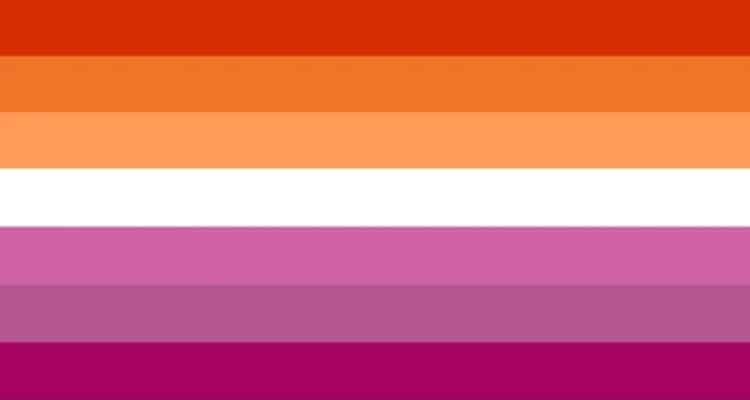
In 2018, Emily Gwen created this new version of a lesbian flag to represent a more inclusive range of lesbian identities. According to the University of Wisconsin-Green Bay, the colors stand for gender nonconformity (dark orange), independence (orange), community (light orange), unique connections to womanhood (white), serenity and peace (pink), love and sex (dusty pink), and femininity (dark rose).
16. Asexual flag
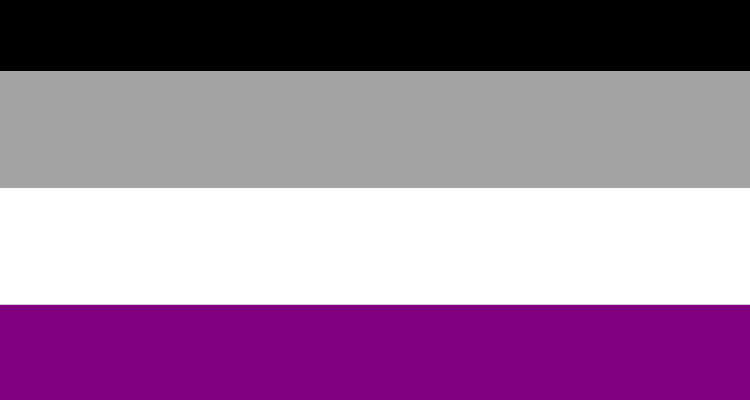
Asexuality is a spectrum, with a total lack of sexual attraction on one end (asexual or ace), and having sexual attraction on the other (allosexual). People whose attractions fall in between are called graysexual, and can be sexually attracted to only some people. The color black in the flag means asexuality. Gray represents graysexual and demisexual people. White represents non-asexual partners and allies, and purple denotes the community at large.
Asexuals deal with a lot of myths and acephobia even within the community, as queer people debate whether they belong to the community or not. This is why their representation through this flag is important.
17. Aromantic flag
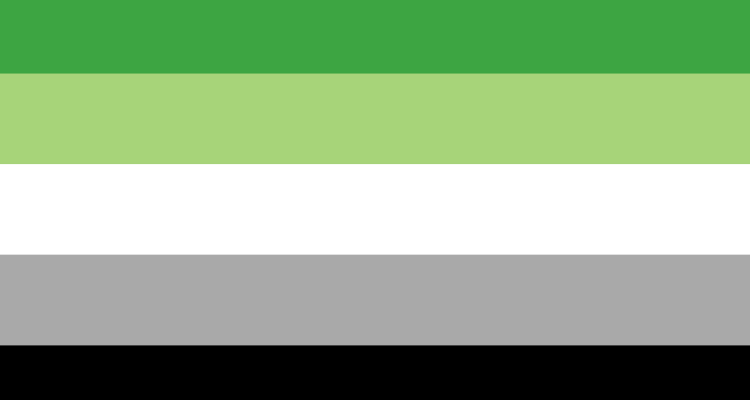
Aromanticism exists across a spectrum. Aromantic people have little or no romantic attraction to others. But there are many ways to have a successful relationship with aromantics. They may or may not feel sexual attraction. Similar to the agender flag, the aromantic flag colors mean the following: Green represents people living without any romantic attraction or with a different romantic attraction. Gray and black represent all aromantic sexualities.
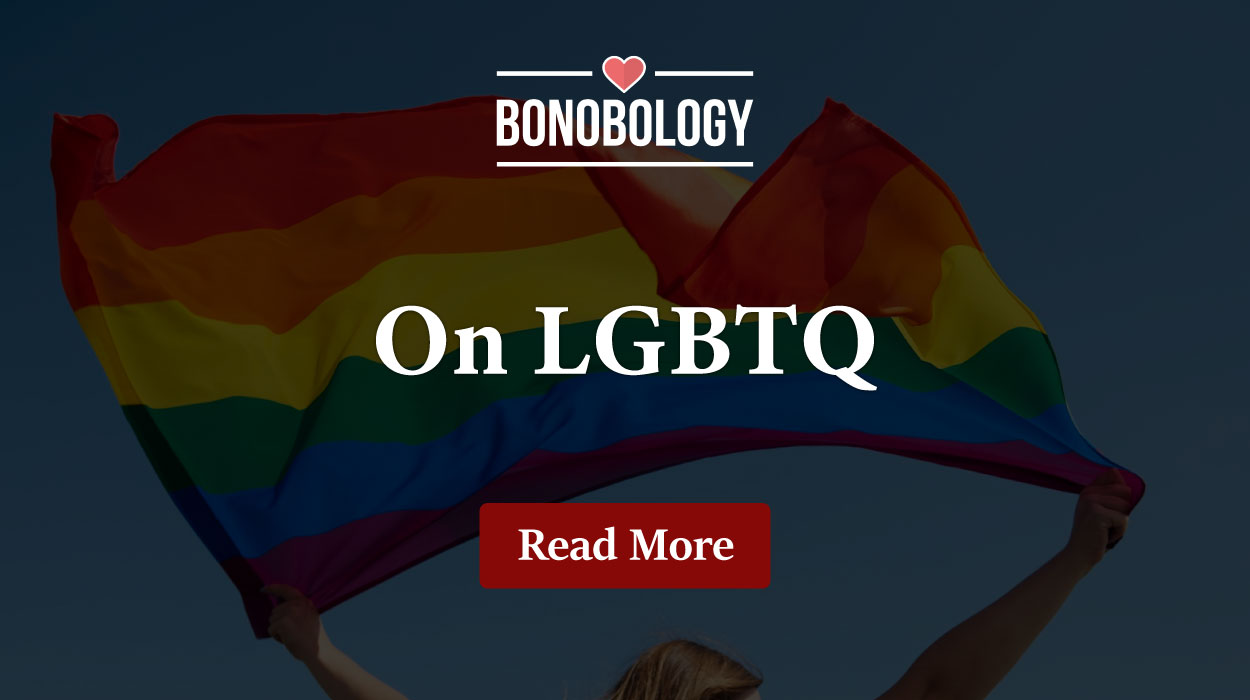
18. Polysexual flag
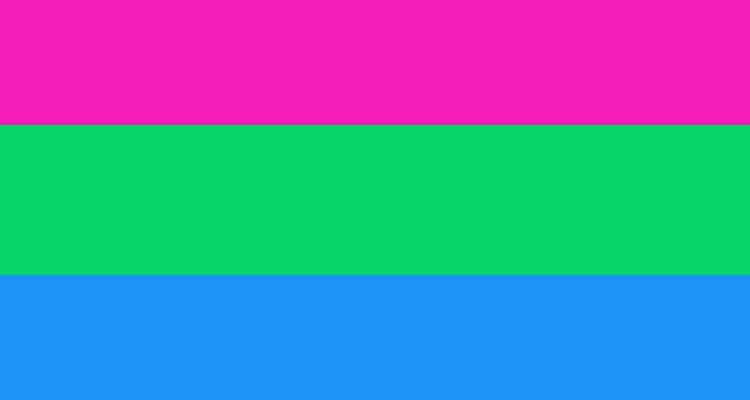
A polysexual person can be sexually and/or romantically attracted to multiple genders. Tumblr user Tomlin created the polysexual flag. Pink means attraction to women, green is attraction to enby people, and blue is attraction to men. Also, remember that sexual and romantic orientations are different things!
19. Abrosexual flag
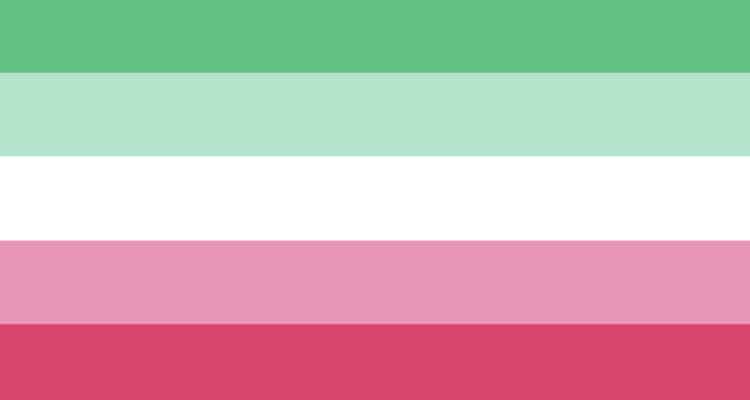
An abrosexual person has a fluid sexual orientation, as in their sexual orientation can change with time. Example: They could be a lesbian for a few years and then asexual for a year, or bisexual this month and polysexual the next. According to the interpretation of a Tumblr user, the green in the flag represents queer attraction, the fade to white is for the in-between stage of attraction shifting, and pink is for the actual shift itself. The flag was created in 2015.
Related Reading: 18 Types Of Sexualities And Their Meanings
20. Gay men’s flag
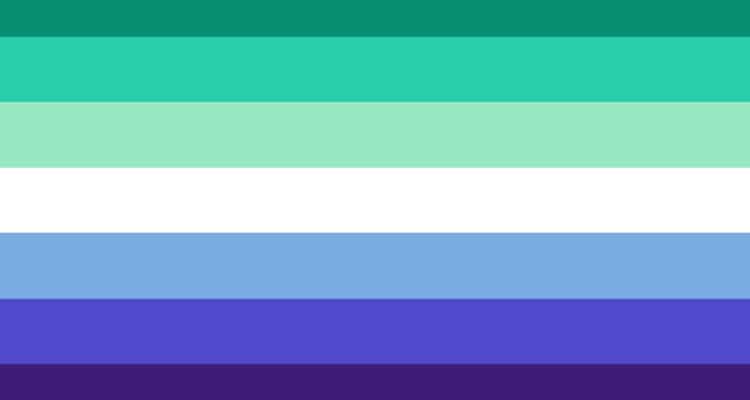
The flag for gay men is not that common, but has quietly continued to evolve just like the others. This modern version of the flag includes a wide range of gay men, including but not limited to intersex, trans, and GNC people. Turquoise to green colors represent community, healing, and joy. White represents gender nonconforming, enby, and trans people. Blue to purple colors represent true love, fortitude, and diversity.
21. Polyamory flag
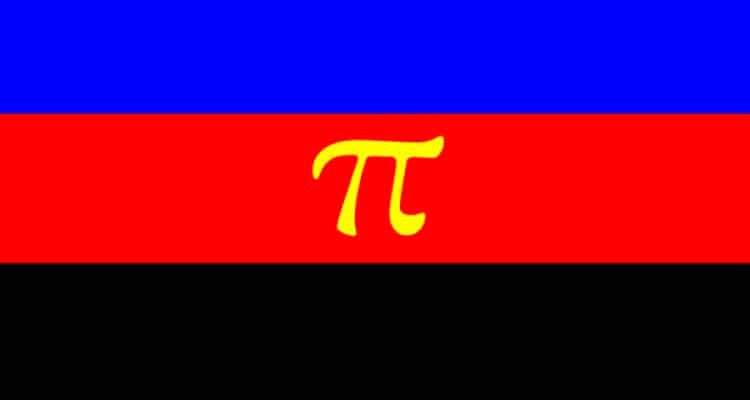
Polyamory is the practice of engaging in multiple romantic (and sexual) relationships, with the consent of all the people involved. The color blue in the flag denotes the openness and honesty among all partners, and red denotes love and passion. Black denotes solidarity with the people who are compelled to hide their polyamorous relationships due to stigma and discrimination.
The pi (π) symbol represents potential for endless love and intimate relationships in polyamory. The gold in pi is the value of emotional attachment. Polyamory, after all, is not just about carnal pleasures, but about forming intimate partners and friendships.
I tried to cover as many LGBTQ pride flags and their names and meanings as I could. There are many more in existence, or being developed as I write this. But these are the ones I wanted to highlight today, either because of how important they are historically or how oppressed these identities continue to be. I hope this answers the question – “How many pride flags are there?”
*In this article, the word ‘queer’ is used as an identifier for any person belonging to the LGBTQIA+ community
Your contribution does not constitute a charitable donation. It will allow Bonobology to continue bringing you new and up-to-date information in our pursuit of helping anyone in the world to learn how to do anything.
Ask Our Expert
You must be Logged in to ask a question.

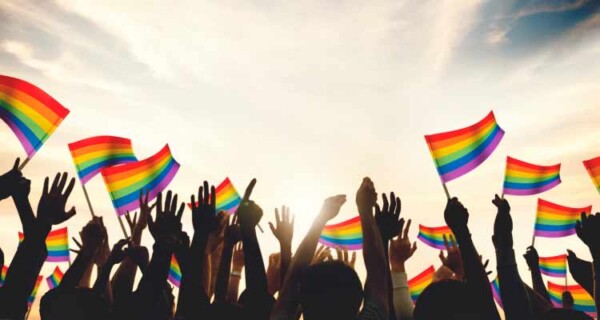

Featured
10 Signs Of Bisexuality In Males: Understand Your Sexuality And Fight Common Misconceptions
How LGBTQ+ Individuals Can Benefit From Online Therapy: Breaking Barriers And Nurturing Mental Health
30 LGBTQ Books You Should Read In 2023
Am I Bisexual? 18 Signs Of Female Bisexuality To Know If You’re A Bi Girl
11 Things You Need To Know For A Successful Aromantic Relationship
Am I A Lesbian? Here Are 10 Signs That May Help You Know For Sure
Could You Be Demisexual? 5 Signs That Say So
Pride Decorations And Rainbow Pride Party Decor Ideas
Lesbian Outfit Ideas – A Complete Fashion Guide
10 Best Lesbian Dating Apps For 2022 To Chat & Meet
15 Things That Attract A Woman To Another Woman
Top 12 Best LGBTQ Dating Apps – UPDATED LIST 2022
The Yin And Yang Of The Sexuality Spectrum
Sex Work And Love: A Sex Worker’s Story
18 Types Of Sexualities And Their Meanings
Queerplatonic Relationship- What Is It And 15 Signs You Are In One
Transgender Dating And The Taboo Around It
7 Signs Your Husband Is Gay, And 5 Ways YOU Can Help Him
I Am Out But My Family Went Into A Closet
What You Need To Know About Coming Out Of the Closet